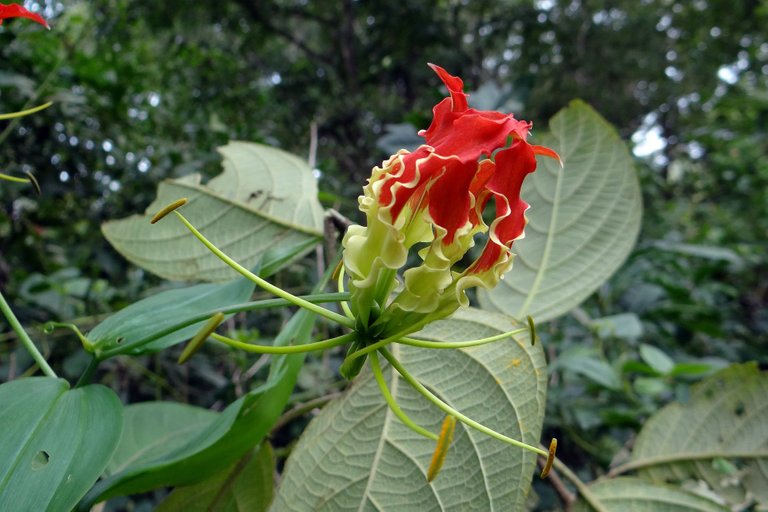
The Flame Lily (Gloriosa superba) is a climbing vine that is native to tropical regions of Africa and Asia. It has distinctive, showy flowers that are brightly colored, with petals that range from yellow to red and are often striped or speckled with contrasting shades. The petals are long and slender, curving upward, giving the flower a flame-like appearance.
The plant has long, slender stems that can reach lengths of several meters, and tendrils that allow it to climb and scramble over other plants and objects. The leaves are long and narrow, with a glossy green appearance.
The Flame Lily blooms in the summer and fall, producing clusters of flowers at the ends of its stems. The flowers are highly fragrant and are pollinated by insects, such as bees and butterflies.
In traditional medicine, the Flame Lily has been used to treat a variety of ailments, such as pain, swelling, and infections. The plant contains several toxic alkaloids, however, so its use should be done with caution and under the supervision of a healthcare professional.
The Flame Lily is widely cultivated as an ornamental plant, prized for its bright, showy flowers and attractive foliage. It is often grown in greenhouses, or as a potted plant in temperate climates, and can also be grown in outdoor gardens in tropical and subtropical regions.